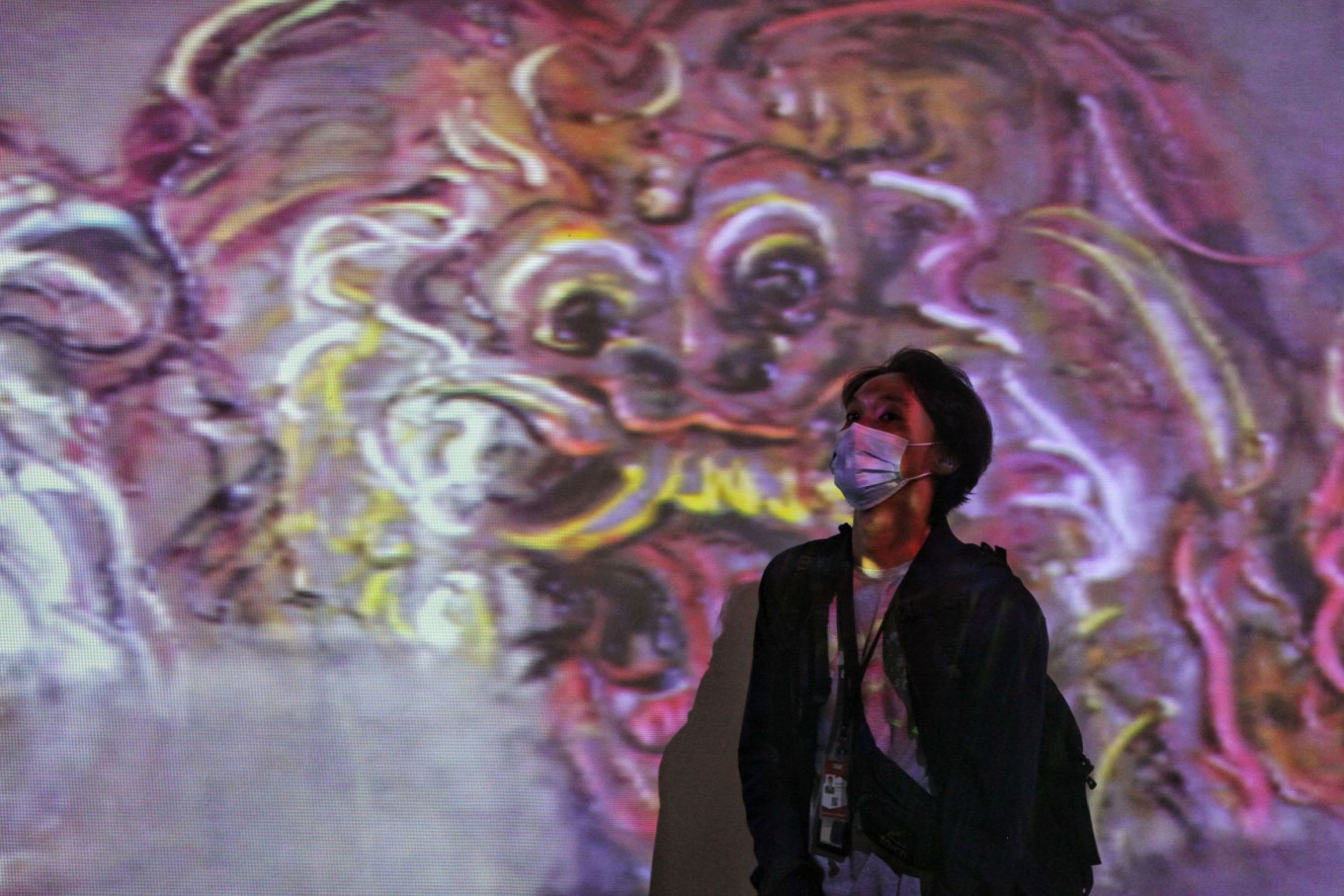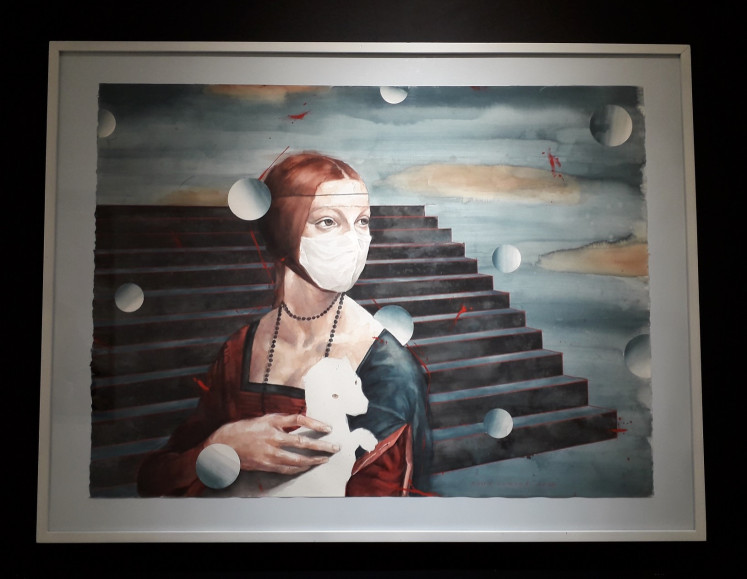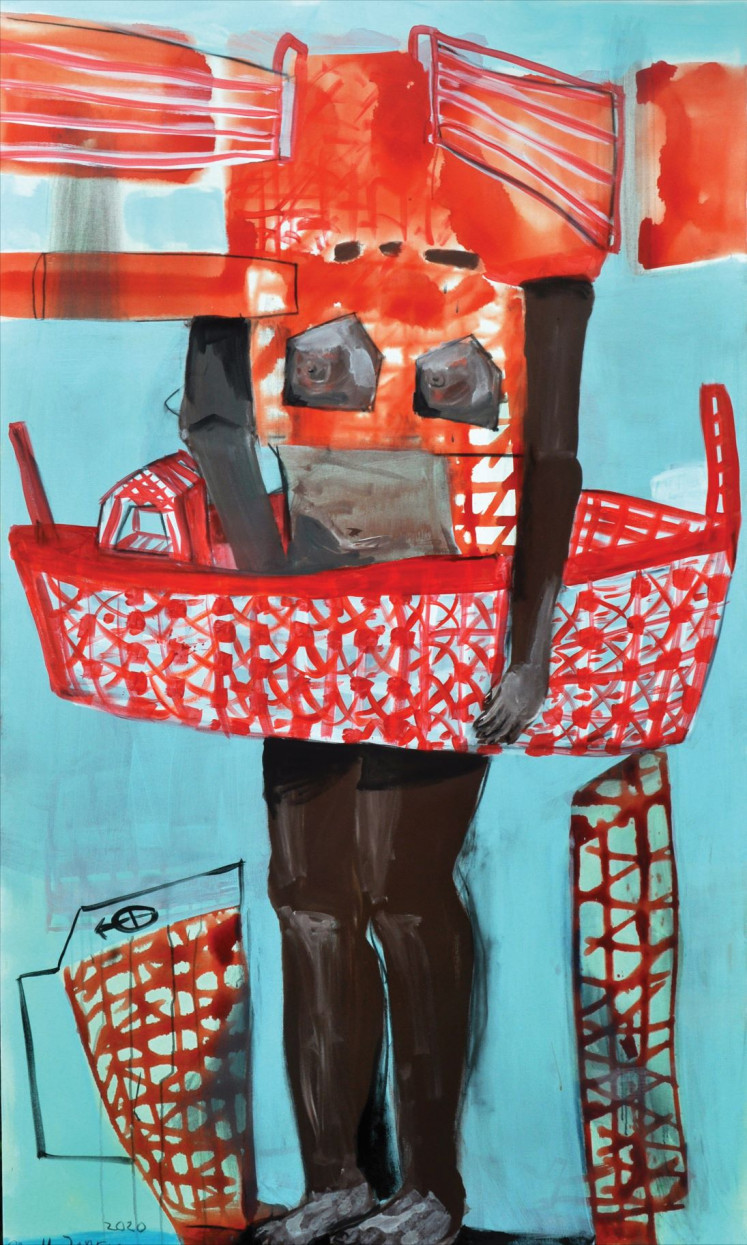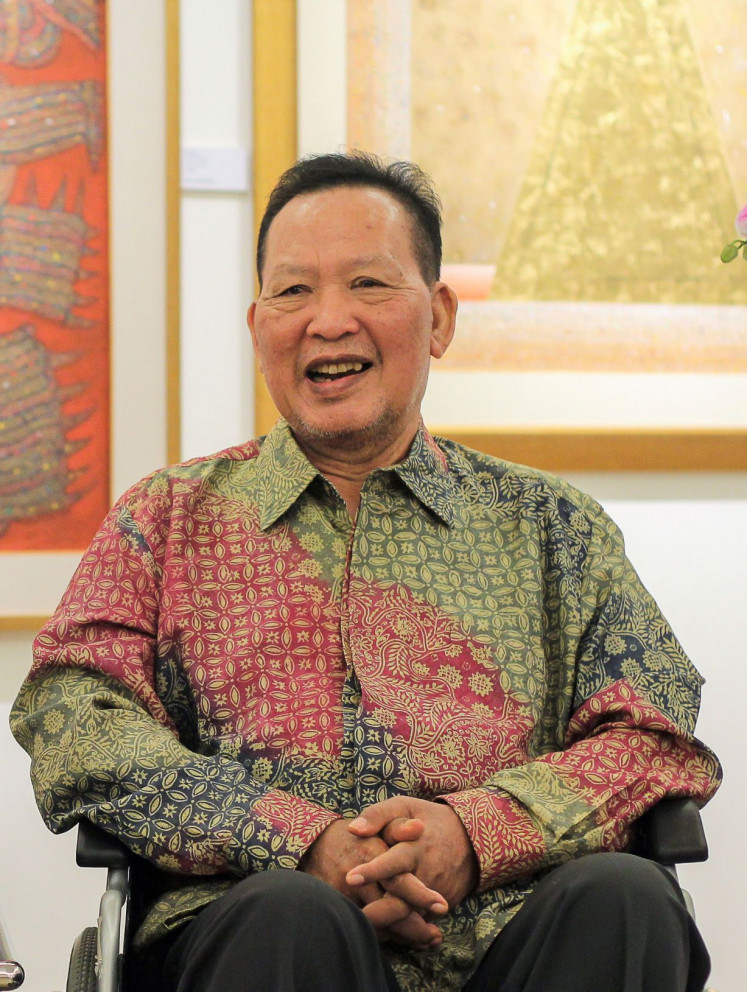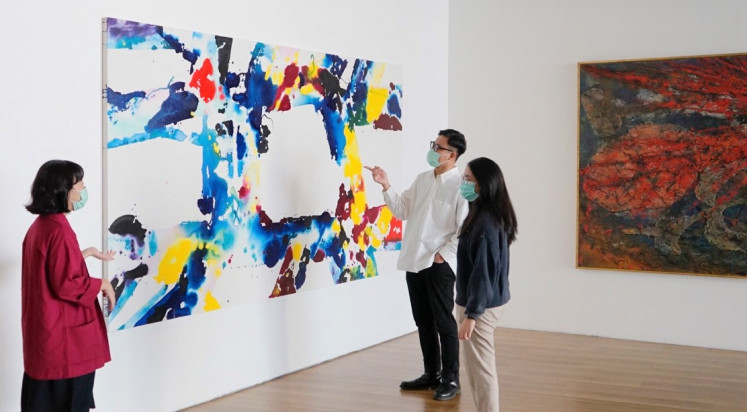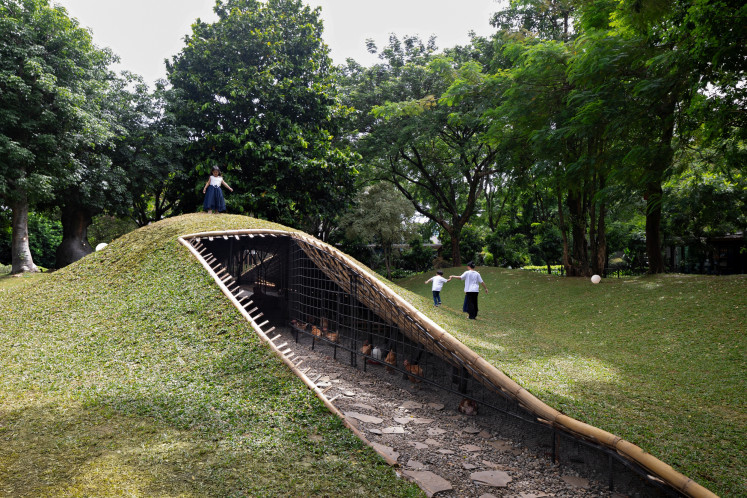Popular Reads
Top Results
Can't find what you're looking for?
View all search resultsPopular Reads
Top Results
Can't find what you're looking for?
View all search resultsYear in review: Art matters in this turbulent year
The pandemic has forced people to experience art in a new way and embrace the technology that delivers it.
Change text size
Gift Premium Articles
to Anyone
T
he year 2020 has truly put to the test people’s love for art, as the pandemic has forced many galleries, museums and art events to close and drop their plans.
In May, UNESCO launched the Report on Museums Around the World in the Face of COVID-19, its first evaluation of the pandemic’s impact across the museum sector.
The study reveals that 90 percent of museums closed their doors during the crisis and, according to the International Council of Museums, more than 10 percent may never reopen. The number of museums was estimated at 95,000 in 2020 – 60 percent more than in 2012.
In Indonesia, UNESCO recorded 163 museums, all of them closed due to the pandemic.
Despite the situation, it is encouraging to see that, around the world, including in Indonesia, many art event organizers, gallerists, museums and even artists have risen to the occasion.
They capture the mood of the moment and, with the social distancing in place, embrace new technology to bring art closer to the people – to their homes, affording them the chance to experience art in a new way in the comfort of their homes.
ART FAIRS
The pandemic has forced some organizers to completely drop events or push them back to next year.
Out of health and safety concerns, the organizer of the second edition of the Art Moments Jakarta fair, a key part of the region’s cultural calendar by shining a spotlight on Southeast Asian art and artists, was postponed until June 2021.
“This is a difficult time for many, and no one is being spared, but let us keep our hopes high and pray that we will eventually get through this difficult time together,” the fair’s director, Leo Silitonga, said in a statement.
The fair, to be held at the Sheraton Grand Jakarta Gandaria City, was hoping to bring in 20,000 visitors over the course the three days, and at least 50 art galleries had confirmed their participation.
Spirit of resilience: Agus Suwage's 'Droplet series - After Da Vinci' is one of the works shown during the ARTJOG special edition in Yogyakarta. (JP/Sri Wahyuni)In Yogyakarta, the annual ARTJOG contemporary art festival created a special edition – titled ARTJOG: Resilience – held both virtually and physically from Aug. 8 to Oct. 10. The original event, earlier scheduled to take place from July to August at Yogyakarta’s Jogja National Museum, was postponed to 2021.
“This is an ARTJOG emergency response,” explained ARTJOG’s director and founder Heri Pemad of the special edition.
The special edition opened online on Aug. 8 with in-person previews for a limited number of media representatives, officials and partners held from Aug. 22 to 29.
Later on, after getting the necessary permits, the fair was officially opened to the public, with strict health protocol in place, on Sept. 7 in three to four shifts a day, with each shift lasting two hours and the number of visitors limited to 60.
“A virtual visit is just not satisfying. It’s like watching an animation,” Pemad said, emphasizing the reason for the organizer to allow physical visits.
Contemporary: Mella Jaarsma’s work, 'Pasang II' (charcoal, acrylic on canvas), is presented at the OPPO Art Jakarta Virtual 2020 by Semarang Gallery. (Courtesy of Mella Jaarsma/Semarang Gallery/OPPO Art Jakarta Virtual 2020)Back in Jakarta, the 12th edition of Art Jakarta or OPPO Art Jakarta Virtual 2020, has completely embraced the virtual world and is said to be the first of its kind in Southeast Asia, if not Asia.
The fair’s director, Tom Tandio, said the format had been conceived to help energize the slumping creativity in the art world in Indonesia that tended to be falling into oblivion, with galleries closing their doors and artists facing challenges in continuing their creative activities, let alone selling artworks.
The new format turned out successful. The fair, which ran from Oct. 19 to Dec. 15 and presents almost 800 works, has been visited by more than 30,000 viewers during the first month alone.
The success has prompted the organizer to extend the fair for a second edition, running from Dec. 16 until Feb. 15 next year and presenting works by artists from 27 Indonesian and 11 international galleries.
IN THIS TOGETHER
The pandemic has brought Indonesia’s arts scene together to fight the good fight, with several initiatives emerging to lend a helping hand to support healthcare workers and at-risk communities as well as artists struggling with the loss of opportunities.
In support: 'Demi Waktu' (For time’s sake) by Agung Pekik is one of 40 works put on auction online by Mitra Museum Jakarta Foundation to support artists during the pandemic. (Courtesy of Mitra Museum Jakarta Foundation /-)Mitra Museum Jakarta Foundation held an online auction of 40 artworks to directly support artists from Bali, Bandung and Yogyakarta in May.
Director Catharina Widjaja said on the foundation’s website that 100 percent of the proceeds from the sales would go to the artists, who in turn would use part of the funds to purchase staple foods for artisans and other workers who regularly support their creations and exhibitions.
Art auctioneer Sidharta Auctioneer also ran online auctions as a show of support for artists, health workers and at-risk groups during the pandemic. The first edition, held from April 30 to May 3, fetched a total of Rp 52.9 million (US$3,744), which was donated to the Indonesian Doctors’ Association (IDI).
“There are many instances of support to artists so that they can create artworks that inspire us, guide us to do well and discourage the bad. The arts play a positive role for us, so that we never lose our spirit and continue having hope,” the auction house’s chairman and curator Amir Sidharta told The Jakarta Post.
Remembered: Renowned Balinese artist I Made Wianta passed away on Nov. 13, leaving some 25,000 artworks he had meticulously archived as well as his stance on social and political issues as his legacy. A new exhibition opened on Dec. 20, the day the artist would have turned 71, at Komaneka Gallery, Keramas in Gianyar, Bali. (JP/-)The Museum of Modern and Contemporary Art in Nusantara (Museum MACAN) also supported artists by holding an artwork raffle in three rounds, where patrons could purchase a mystery artwork, which featured works by both senior and up-and-coming artists with names like Melati Suryodarmo and Tisna Sanjaya, for a flat price of Rp 1 million.
Seventy percent of the proceeds went to the artists or their charity of choice, with the rest of the funds allocated to training programs for selected art managers.
Museum MACAN director Aaron Seeto said that, despite the pandemic, artists had been contributing actively, ranging from creating content to keeping the public entertained and helping distribute personal protective equipment to frontline health workers.
But the arts ecosystem was fragile and required our attention, he said, and without the largesse of a social safety system as seen in the West, “there is real concern for the future, because without artists, we have no culture, and our society ultimately suffers”.
OPENING UP
Approaching the end of the year, several museums and galleries have started opening up, either by imposing strict health protocols and/or appointment-only visits.
After closing its doors for several months and moving the exhibitions online, the National Gallery of Indonesia, for instance, exhibited works by renowned painter Affandi, bringing them to life in an immersive spectacle during the “Alam, Ruang, Manusia” (Nature, Space, Human) show on Oct. 27 to Nov. 25.
The exhibition opened to visitors but with strict health protocol in place and limited sessions, with visitor numbers capped at 20 per session. Advance online registration was also required.
Getting ready: Visitors and staff plan to follow new health and safety protocols at Museum of Modern and Contemporary Art in Nusantara (Museum MACAN) as it plans to reopen on Jan. 23, 2021. (Courtesy of Museum MACAN/-)Museum MACAN has also announced its reopening plan on Jan. 23 with exhibition lineup – from new shows, educational activities to art talks and conversations – for 2021, both virtually and physically.
Guests are required to book their visit online, as tickets will be limited to 100 per each of four daily sessions. Strict health and safety protocol will also be in place.
The lineup includes Citra Sasmita’s Tales of Nowhere, the latest UOB Museum MACAN Children’s Art Space Commission, which was launched virtually on Dec. 15. Visitors will also be able to encounter the artist’s massive scroll painting, inspired by the classic Balinese Tantri story, which will be on display until May 22 next year.
Museum MACAN Foundation chairwoman Fenessa Adikoesoemo said in a statement that the social disruption this year had made people realize how important art and culture were for society undergoing tough times.
“Art enables us to reflect upon the challenges that we face personally and communally as a nation and part of the world, get together to strengthen each other, and will serve as a marker of such a unique circumstance that has significantly altered our way of living.”

